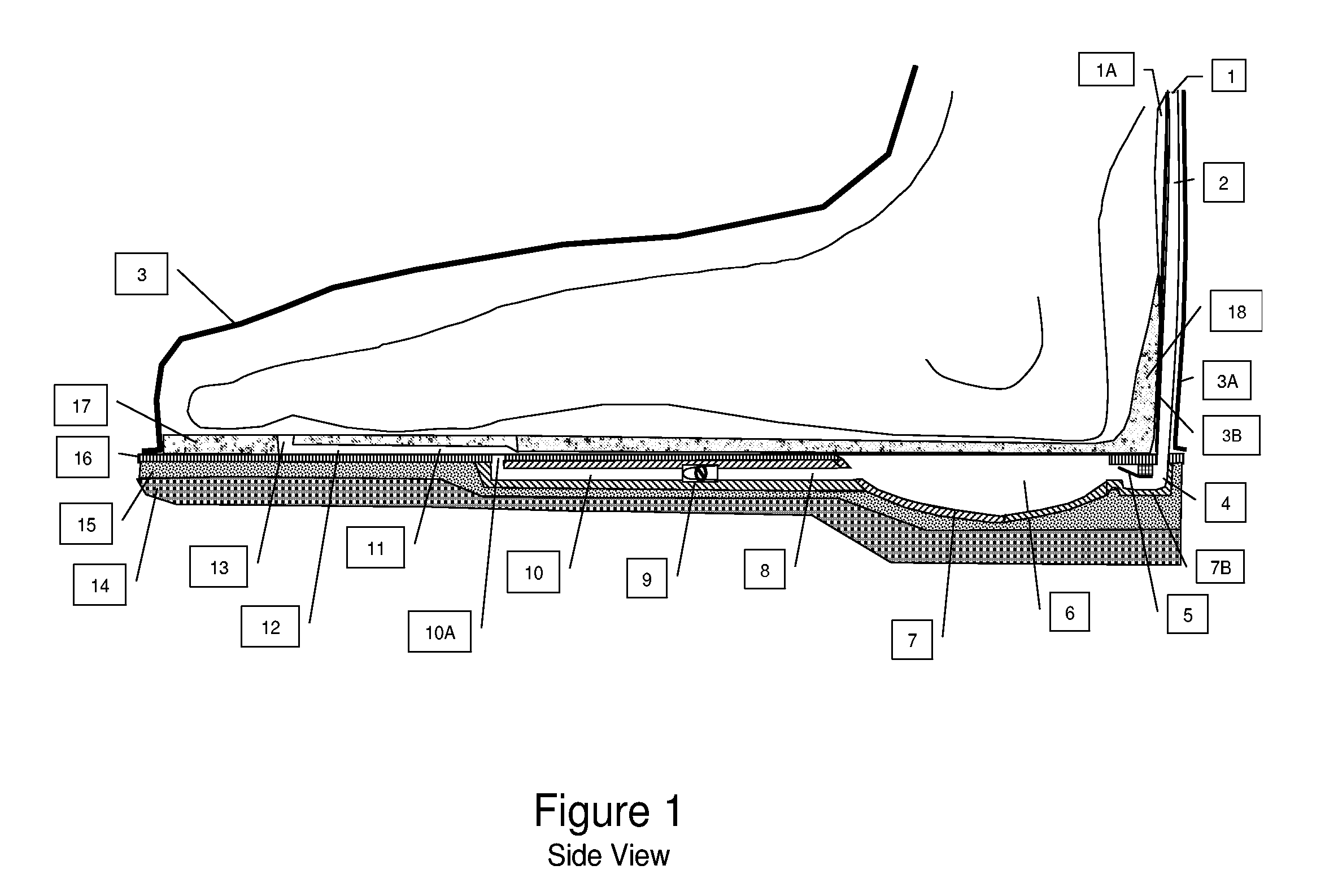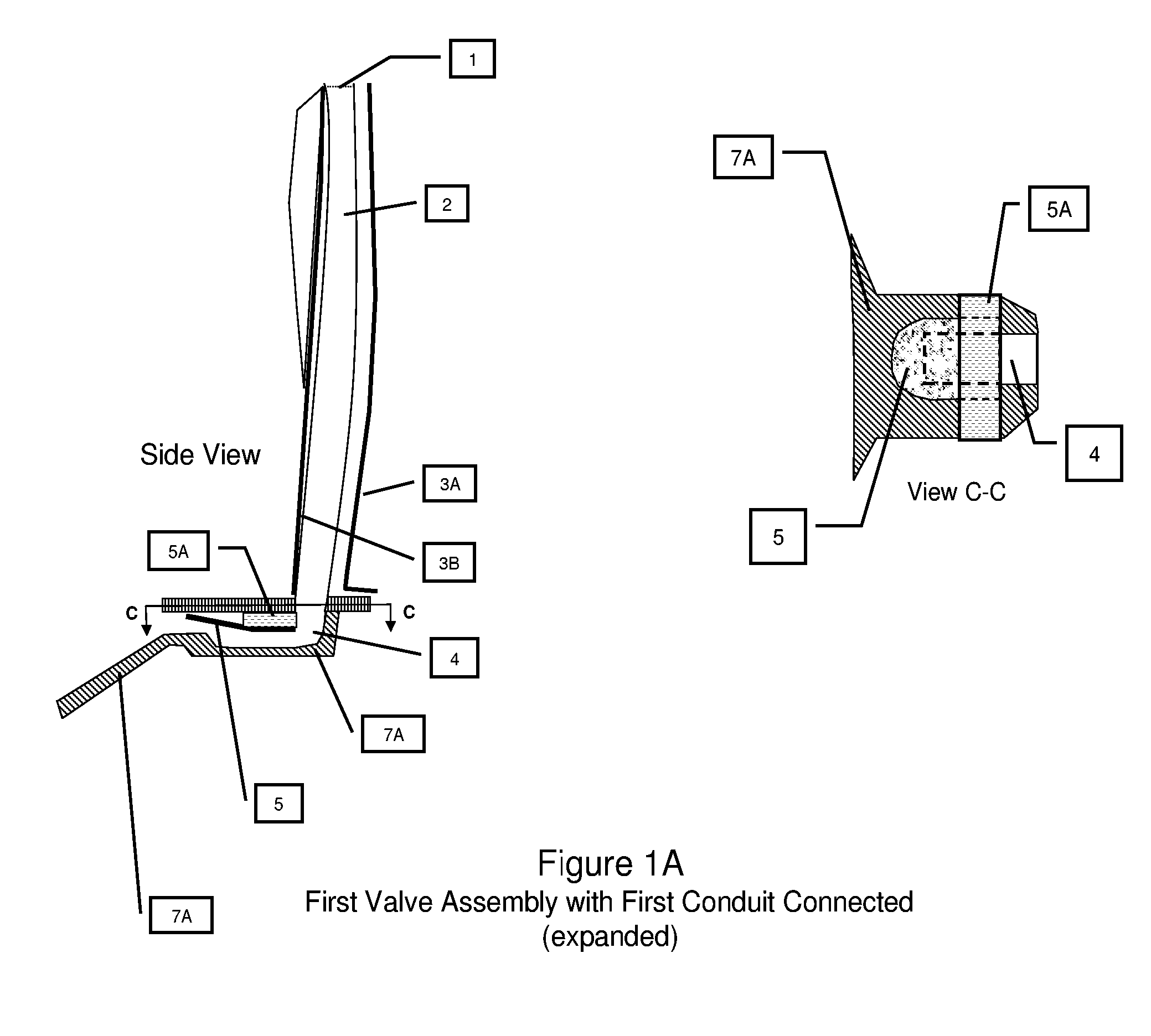Shoe Ventilation and Shock Absorbtion Mechanism
a technology of shock absorption mechanism and shoe, which is applied in the field of shoe ventilation and shock absorption mechanism, can solve the problems of lack of control of air/fluid transfer rate, lack of proper fresh air flow, and accumulation of moisture within air channels and cavities, and achieve the effect of preventing the inclusion of particulate matter
- Summary
- Abstract
- Description
- Claims
- Application Information
AI Technical Summary
Benefits of technology
Problems solved by technology
Method used
Image
Examples
Embodiment Construction
[0008] To achieve the purposes of the present invention as embodied and described herein, the article of footwear of the present invention comprises a shoe upper and a sole which are stitched or bonded together to form a cavity to comfortably accept the foot of a wearer (hereinafter called the shoe cavity). The sole may be made of an outsole made up of an abrasion resistant material, a midsole made up of an elastomeric cushioning material and an insole. The footwear may also contain a sock liner made of an elastomeric, non-permeable cushioning material which resides upon and may be attached to the insole.
[0009] The mechanism is made up of a first conduit, a first valve, a first chamber, a second conduit, a second valve, a third conduit, a second chamber and any number of fourth conduits terminated by holes ending in the shoe cavity.
[0010] The first conduit fluidly connects from the external part of the shoe at the heel near the ankle to conduct air into the system and terminates a...
PUM
 Login to View More
Login to View More Abstract
Description
Claims
Application Information
 Login to View More
Login to View More - R&D
- Intellectual Property
- Life Sciences
- Materials
- Tech Scout
- Unparalleled Data Quality
- Higher Quality Content
- 60% Fewer Hallucinations
Browse by: Latest US Patents, China's latest patents, Technical Efficacy Thesaurus, Application Domain, Technology Topic, Popular Technical Reports.
© 2025 PatSnap. All rights reserved.Legal|Privacy policy|Modern Slavery Act Transparency Statement|Sitemap|About US| Contact US: help@patsnap.com



